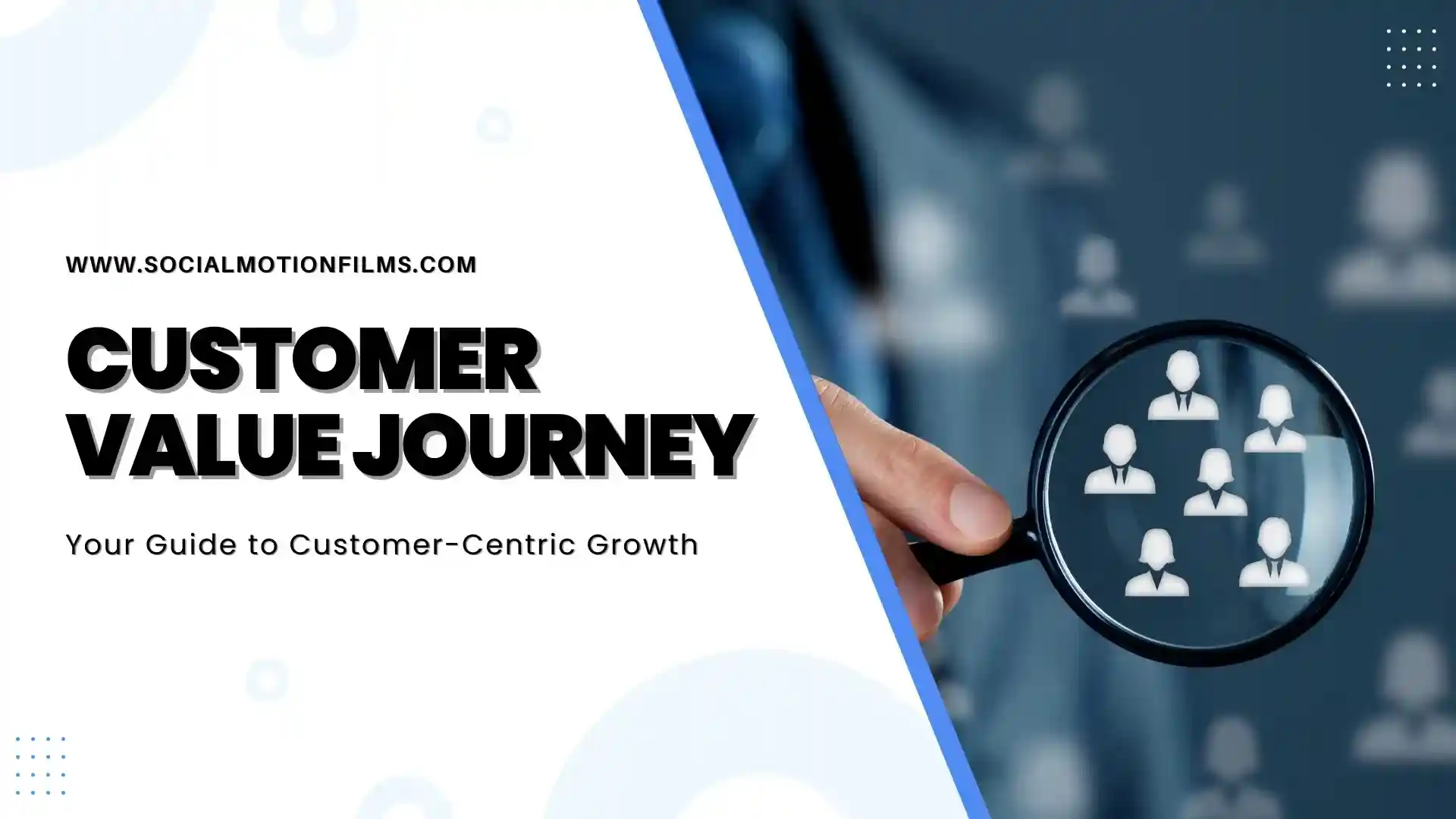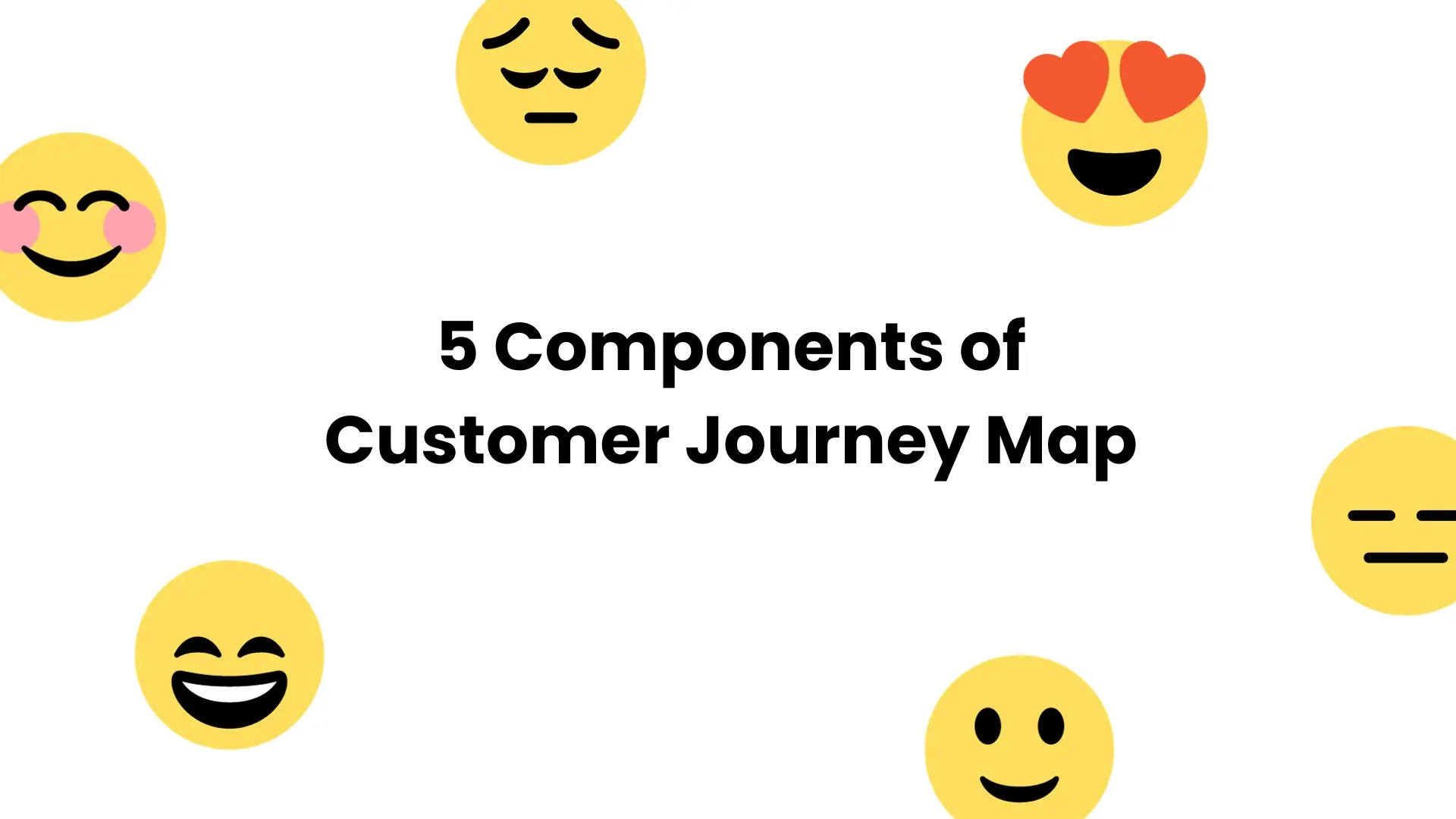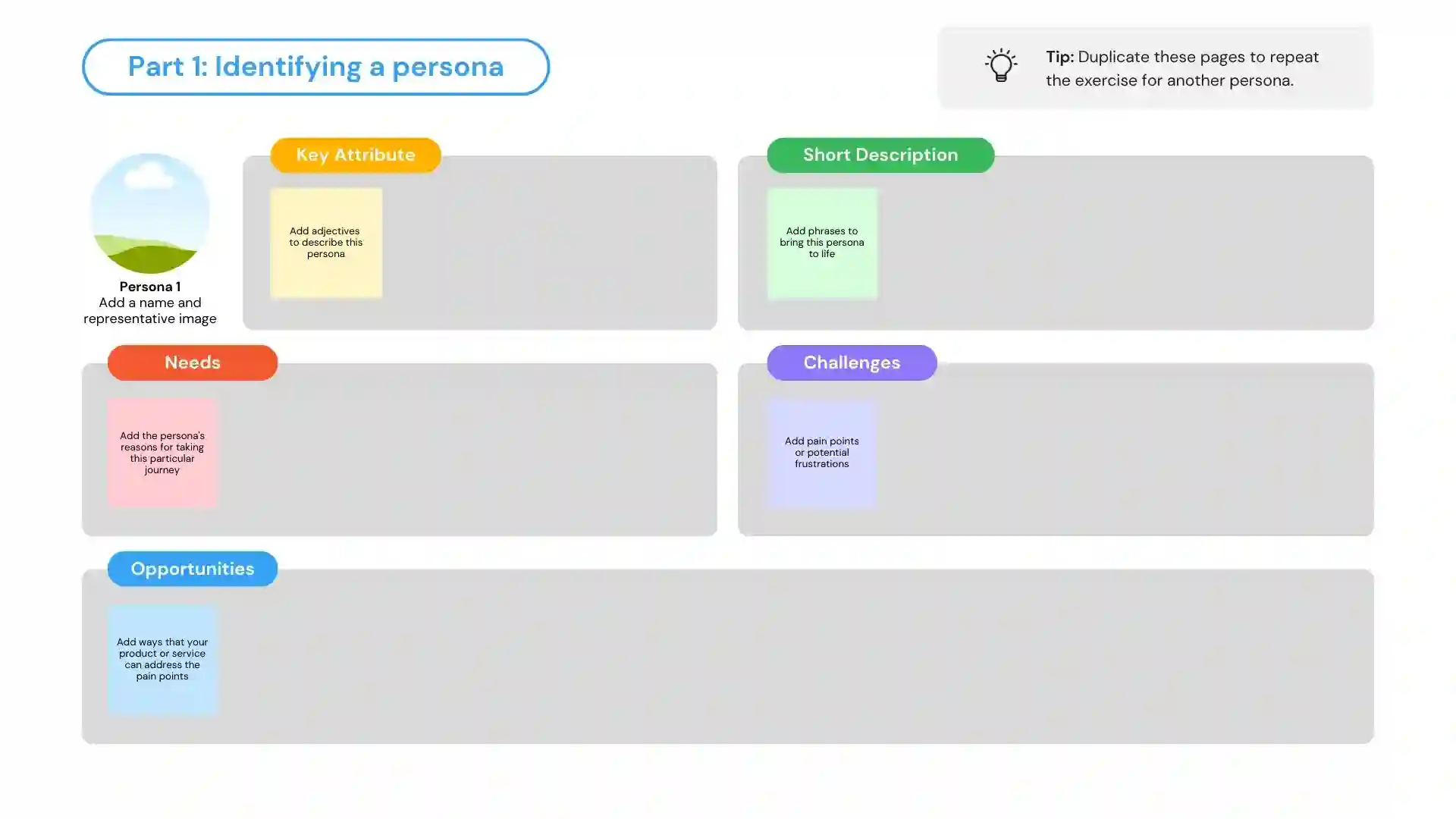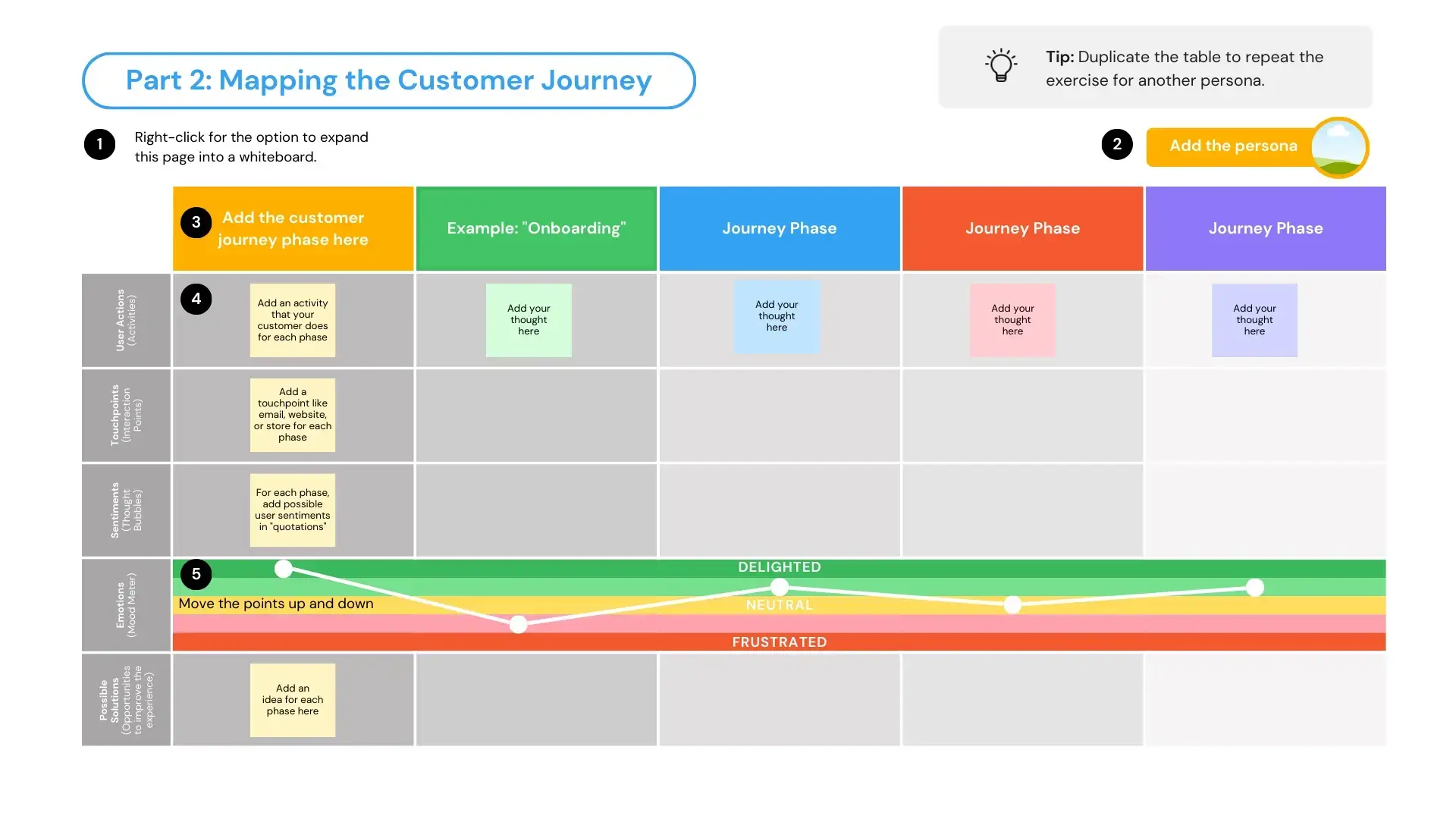
Table of Contents:
In the ever-changing business world, knowing the customer value journey is crucial for your brand's growth and success. It doesn't matter if you're a seasoned business owner or a new entrepreneur. Understanding this journey can greatly boost your success.
In this guide, we'll explore the customer value journey in detail, covering its nuances, significance, and tracking improvement. If you're into video marketing and want to align your strategies with the customer value journey, you're in the right place.
What is a Customer Value Journey?
The Customer Value Journey is a powerful idea shaping how businesses interact with customers. It guides them from the first contact to turning into loyal advocates. It's a dynamic and evolving process, a roadmap of interactions and experiences your customers go through, and it's essential for modern businesses. But what exactly does it entail?
In simple terms, the Customer Value Journey is a systematic framework that maps out the entire lifecycle of a customer's relationship with your business. It comprises multiple stages or touchpoints, starting from the moment they discover your brand, moving through the phases of engagement, conversion, and, ultimately, turning them into loyal customers.
Why is Understanding the Customer Value Journey Important for Businesses?
Understanding the Customer Value Journey is vital for your business's success in today's competitive market. Here are several reasons why you should prioritize it:
1. Tailored Marketing Efforts
When you comprehend the stages of the Customer Value Journey, you can tailor your marketing efforts to match each stage. For instance, you can use different strategies to attract new customers and retain existing ones, thereby maximizing your marketing budget.
2. Improved Customer Experience
By recognizing the journey your customers go through, you can create a seamless and enjoyable experience at every stage. This not only satisfies your customers but also encourages them to stay engaged and refer others to your brand.
3. Enhanced Customer Retention
When you understand the path that leads to customer loyalty, you can invest your resources in customer retention and reduce churn. Loyal customers are often your most profitable ones, and they are more likely to generate word-of-mouth referrals.
4. Data-Driven Decisions
Analyzing the Customer Value Journey allows you to collect and analyze valuable data, enabling you to make informed decisions about your marketing strategy. It's easier to identify which stages need improvement and allocate resources effectively.
5. Competitive Advantage
Businesses that invest in understanding and optimizing the Customer Value Journey gain a significant competitive advantage. You can outperform competitors by offering a superior, personalized experience to your customers.
6. Increased ROI
By aligning your marketing efforts with the Customer Value Journey, you can maximize your return on investment (ROI) as you spend resources where they matter most. This leads to more efficient marketing campaigns and better results.
In addition, according to Forbes statistical data indicates that businesses with a strong customer-centric approach tend to be 60% more profitable than those that do not prioritize their customers.
What is Customer Journey Optimization?
Customer journey optimization is the strategic process of enhancing and refining the path that customers take as they interact with your brand, product, or service. It's a holistic approach to creating a seamless and satisfying experience for your customers at every touchpoint along their journey. It involves analyzing data, identifying pain points, and making necessary adjustments to enhance the overall customer experience. This process may involve refining marketing strategies, streamlining sales processes, enhancing customer support, and more.
In essence, customer journey optimization means aligning your business to serve customers better at every stage. It involves understanding your customer needs, preferences, and behaviors. Then, you use this knowledge to make data-driven changes. These changes boost customer satisfaction, loyalty, and business success.
Related Posts:

What are the 5 Key Components of Customer Journey Map?
A customer journey map is a visual representation of the customer's interactions with your brand. It serves as a roadmap for understanding your customers and identifying areas where you can make improvements. A well-constructed customer journey map includes five key components:
1. Persona Development
The foundation of a customer journey map begins with understanding your customers. This involves creating detailed customer personas, which are semi-fictional representations of your ideal customers. By knowing who your customers are, what they desire, and what challenges they face, you can tailor your marketing strategies and customer experiences to meet their specific needs.

2. Touchpoints and Channels
Identifying the various touchpoints where customers interact with your brand is crucial. This includes websites, social media, email, and more. Understanding these touchpoints allows you to optimize them, ensuring consistency and quality in customer interactions.
3. Customer Goals and Emotions
It's essential to comprehend the goals and emotions of your customers at each stage of their journey. What are they trying to achieve, and how do they feel about their interactions with your brand or product? This knowledge enables you to provide tailored content, support, and services to meet their expectations and address their emotional needs.
4. Content Mapping
This involves mapping your existing or planned content to each touchpoint on the customer journey. Video content can be particularly effective at engaging customers, so you'll want to ensure that your video content aligns with the various stages and emotions your customers experience. For instance, videos can introduce your brand, explain your products or services, offer testimonials, and provide support and educational content.
5. Performance Metrics
To ensure the continuous improvement of your customer journey, it's crucial to establish key performance indicators (KPIs) and metrics. These metrics will help you evaluate the effectiveness of your video content and assess how well it contributes to customer satisfaction, loyalty, and overall business growth.

Why is Customer Journey Mapping Important?
Understanding the customer value journey is crucial for businesses and brands looking to excel in the realm of video content. The customer journey mapping process is not just a helpful tool but an absolute necessity in today's competitive landscape. Here's why:
1. Enhanced Customer Engagement
By creating a customer journey map, businesses can gain deep insights into their audience's preferences, needs, and pain points. This understanding is the first step in crafting video content that truly resonates with your target audience. When your content speaks directly to their concerns, you not only capture their attention but also build a stronger emotional connection.
2. Personalized Content Creation
Mapping the customer journey empowers you to segment your audience effectively. This means tailoring your video content to suit the specific desires and requirements of different customer groups. Whether you're addressing prospects, first-time buyers, or loyal customers, you can create content that speaks directly to their position in the journey, driving higher engagement and conversions.
3. Optimized Marketing Strategies
Customer journey mapping allows you to identify critical touchpoints along the path to purchase. With this knowledge, you can allocate your resources more efficiently and ensure that your video content is present at the right place and time. This not only increases the effectiveness of your marketing efforts but also helps in cost-saving.
4. Continuous Improvement
The customer value journey is not a static concept. It evolves as your business grows and as customer preferences change. By continually mapping the journey, you can adapt your video content and marketing strategies to stay ahead of the curve. This adaptability is key to maintaining a competitive edge in the fast-paced world of digital marketing.

5. Measurable Success
With a well-defined customer value journey, you have a framework for setting clear objectives and tracking your progress. You can measure the success of your video content at different stages of the journey and make data-driven adjustments to optimize your marketing efforts.
Understanding and mapping the customer journey is not just a smart business move; it's essential. It empowers your brand to create highly engaging and personalized video content, streamline your marketing efforts, and adapt to changing market dynamics. For businesses looking to thrive in the digital age, the customer journey is your guiding compass, ensuring that every video you create serves a purpose and adds value to your audience.
What are the 4 Phases of the Customer Journey?
When we talk about the customer journey, we're referring to a multi-step process that a potential customer goes through before making a purchase. It's not just about attracting them; it's about guiding them through a series of phases, each with its unique characteristics. To embark on this journey, you must first understand the four core phases of the customer journey.
Phase 1: Awareness
The customer journey begins with 'Awareness.' This is the phase where your potential customers first become aware of your brand's existence. They might come across your brand through various channels, such as social media, search engines, or word-of-mouth. This is your opportunity to make a strong first impression.
Customer Value Journey Example: Online Retailer's Awareness Campaign
Imagine you run an online retail store specializing in eco-friendly home products. To create awareness, you could start by producing short videos showcasing your products' eco-friendliness. This not only captures the audience's attention but also educates them on the benefits of sustainable living and how your products align with their values.
Phase 2: Consideration
Once potential customers are aware of your brand, they move on to the 'Consideration' phase. In this stage, they're evaluating their options and considering whether your product or service is the right fit for their needs. Your goal here is to provide them with valuable information and build trust.
Customer Value Journey Example: E-commerce Clothing Brand
Suppose you own an e-commerce store selling trendy clothing. In the Consideration phase, you can create content like in-depth product descriptions, size guides, and style tips on your website. Additionally, you could develop email marketing campaigns offering exclusive discounts to subscribers, which not only provides valuable information but also helps nurture potential customers into making a decision.
Phase 3: Decision
In the 'Decision' phase, potential customers have narrowed down their options and are ready to make a choice. This is your chance to demonstrate why your brand is the best decision. Showcase your unique value proposition and make the decision-making process as straightforward as possible.
Customer Value Journey Example: SaaS Provider
For a SaaS (Software as a Service) provider, the Decision phase could involve offering a free trial with no credit card required. By removing the barrier of commitment, potential customers can experience the software's value firsthand. Additionally, displaying case studies and success stories from existing clients can further reinforce trust in your service.
Phase 4: Purchase
The final stage of the customer journey is 'Purchase.' This is the moment your potential customer becomes a paying customer. But the journey doesn't end here; it transforms into an ongoing relationship with your brand.
Customer Value Journey Example: Subscription Box Service
If you operate a subscription box service, the Purchase phase involves ensuring that your customers receive their subscription boxes on time and in perfect condition. A follow-up email expressing gratitude for their purchase and encouraging them to customize their next box or refer friends can contribute to customer retention.
What is the 5A Customer Value Journey?
1. Aware - Grab Their Attention
The first stage in the 5A Customer Value Journey is 'Aware.' At this point, your goal is to capture your audience's attention. To do this effectively through video content, consider eye-catching thumbnails, intriguing headlines, and engaging visuals. Remember, your audience can't act if they're not aware of your content, so make those first few seconds count!
2. Attract - Connect Emotionally
Now that you've piqued their interest, it's time to establish an emotional connection. Product storytelling and brand storytelling video is your best friend at this stage.
Use video content to convey your brand's narrative, values, and mission. Relate to your audience's pain points and aspirations, and they'll be more likely to stay engaged.
3. Ask - Engage with Questions
The 'Ask' stage is about fostering engagement and interaction. Encourage your viewers to participate by asking questions or prompting them to share their thoughts in the comments. Use interactive features like polls and surveys within your videos to gather valuable insights. This not only strengthens your connection with your audience but also provides valuable data for refining your video content strategy.
4. Act - Drive Conversion
The 'Act' stage is where you convert viewers into customers. Create video content that clearly communicates the value your product or service offers. Incorporate persuasive calls to action (CTAs) that guide your audience toward making a purchase, signing up, or taking another desired action.
5. Advocate - Cultivate Brand Ambassadors
The final stage, 'Advocate,' focuses on turning your satisfied customers into brand advocates. Encourage your audience to share their experiences with your product or service by creating testimonial videos or running user-generated content campaigns. Highlighting these stories can be a powerful way to build trust and credibility within your community.
Related Posts:
How to Use Video to Attract Potential Customers in the Awareness Stage?
Now, let's explore how you can leverage the immense power of video content to attract potential customers in the awareness stage.
1. Educational Videos
Educational videos are a treasure trove for potential customers in the awareness stage. These videos can take many forms, from informative product video demonstrations to in-depth explanations of industry concepts.
By creating educational content that addresses your target audience's questions and pain points, you position your brand as a valuable resource. These videos establish trust, showcase your expertise, and provide a taste of the value your brand can offer.
2. Storytelling
Stories are one of the most potent tools in marketing. Your brand's story is the narrative that makes your business relatable and human. By sharing your journey, values, and mission through video, you create an emotional connection with potential customers. They get a sense of your brand's personality and purpose, which can be compelling.
Additionally, product stories are essential to showcase the unique features and benefits of your offerings. These stories help potential customers envision how your product or service can solve their problems or make their lives better.
3. Explainer Videos
Explainer videos are a concise and visually engaging way to explain complex concepts. Potential customers in the awareness stage are seeking to understand the basics of what your brand does and how it can benefit them.
Explainer videos simplify these ideas and communicate them effectively. They make your brand more approachable and help potential customers grasp the fundamentals of what you offer. These videos should be clear, engaging, and, if possible, inject a bit of your brand's personality.
4. Live Streams
Live streaming is like inviting potential customers into your world. During live streams, you have the opportunity to interact with your audience in real time. This direct engagement builds trust and authenticity. It allows potential customers to ask questions, get immediate responses, and see your products or services in action.
Live streams are perfect for product launches, behind-the-scenes tours, Q&A sessions, and showcasing real-time events. They offer a sense of immediacy and exclusivity that can be highly appealing in the awareness stage.
5. Tutorials and How-Tos
Tutorials and how-to videos are a way to demonstrate your brand's expertise and problem-solving capabilities. In the awareness stage, potential customers often have a problem or question, and they turn to the internet for solutions. B
y creating tutorials and how-to videos that address these concerns, you become a go-to resource. These videos can guide potential customers step by step, showing them how to accomplish specific tasks or overcome challenges. This positions your brand as a helpful and trusted source of information.
We hope you've found these insights into video content marketing helpful in enhancing your customer value journey.
If you're eager to dive even deeper into the world of video marketing, we invite you to read our blog posts "12 Tips for Successful Video Marketing That Drives Results" and "Video Marketing Strategy Guide 2023."
How to Track Customer Journey
To maximize the effectiveness of your customer journey, it's crucial to track and analyze the interactions and touchpoints along the way. Tracking the customer journey provides valuable insights that can improve your strategies and decisions. Here are the key steps for tracking the customer journey:
1. Define Your Goals
First, you need clear objectives. What do you want to achieve through your customer journey? Are you aiming for brand awareness, lead generation, or customer retention? Define your goals, and be as specific as possible. The more precise your objectives are, the easier it will be to track your progress and make adjustments as necessary.
2. Choose the Right Tools
The next step is choosing the right tools to help you collect and analyze data. There's a multitude of tools available that can streamline the process. Tools like Google Analytics, social media insights, or even CRM systems can provide invaluable data. Select the tools that simplify the tracking process.
3. Identify Touchpoints
Next, pinpoint the touchpoints where your customers interact with your brand. These interactions could be through your website, social media, email campaigns, or offline events.
Understanding these touchpoints is crucial because they form the foundation of your customer value journey. Once you know where customers engage with your brand, you can start analyzing their behavior at each touchpoint
4. Collect Data
Data is your golden ticket to understanding your customers better. Gather relevant information at every touchpoint. This data could include website traffic, social media engagement, email open rates, click-through rates, and customer feedback. The more comprehensive your data collection, the more accurately you can map the customer value journey.
5. Analyze and Optimize
Now, it's time to put that data to work. Analyze the information you've collected and identify patterns. Pay attention to the moments where customers drop off or the points where they show the most interest. This analysis allows you to optimize your customer value journey by tailoring your content to their specific needs and preferences.
6. Implement Changes
Based on your analysis, it's time to make some strategic changes. Are there aspects of your video content that are not resonating with your audience? Do you need to adjust your messaging or format? Make the necessary alterations to ensure your content aligns seamlessly with your customer value journey.
7. Continual Monitoring
Tracking your customer journey isn't a one-time task. It's an ongoing process. Continually monitor your touchpoints, collect fresh data, and refine your strategies. Your ability to adapt to changing customer behaviors and preferences will set you apart from the competition.
Conclusion
In conclusion, understanding the customer value journey is vital for businesses and brands aiming to thrive in today's competitive landscape. It serves as the roadmap that guides companies toward building long-lasting relationships with their customers and, in turn, fostering brand loyalty. It's not enough to simply attract customers; it's about guiding them through a series of experiences that cater to their needs and desires at every stage of their journey.
This approach is crucial for businesses, and here's why: it fosters loyalty, encourages repeat business, and turns customers into advocates. By understanding the customer journey, businesses and brands can provide tailored solutions, enhancing the overall customer experience.
At Social Motion, we understand the intrinsic value of this journey and how video content plays a pivotal role in engaging potential customers during the awareness stage. Our specialization in creating compelling video content for businesses and brands can be your compass on this journey. By leveraging the power of video, we help you reach your target audience effectively and craft a memorable brand experience that resonates at every phase of the customer value journey.
As your video production partner, we're committed to helping you tell your brand's story and guiding your customers along this enriching journey, where value is both given and received.
About the Author

Michael Arking is the President and Co-founder of Social Motion, a leading video agency working with global brands including MARS, Nestle Sciences, and Panasonic. Contact Michael to learn more about how to leverage your video content for maximum impact.
